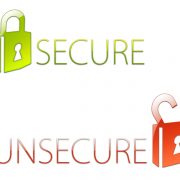How to Choose the Right Self-Directed IRA Plan
If you are ready for retirement investing, what is the next step? The first question to ask is whether a Self-Directed IRA is right for you. In a Self-Directed IRA or retirement plan, you can direct your own decisions. You will have plenty of freedom and flexibility to handle a wide range of options, including investing in real estate, precious metals, tax liens, private notes, and more.
But the question is not always whether you are going to self-direct. It is about which account type suits your specific needs. With that in mind, let us explore some of the most popular types of Self-Directed retirement plans and the specific advantages they offer.
The Self-Directed Roth IRA: Retirement Made Simple
If you want to use the simplest approach, then the Self-Directed Roth IRA is a strong candidate. It uses after-tax money for the contributions—which means your contributions are not tax-deductible. But after that, you generally consider the taxes on that money to have been paid. When you retire, those taxes—already having been paid—will not be an issue when it comes to taking your withdrawals.
A Self-Directed Roth IRA also means that you can contribute up to $6,000, in most cases, for the year of 2020.
The Self-Directed SEP-IRA: Higher Contributions, with Simplicity intact
Let us say that you want to invest aggressively as you build a retirement portfolio. You are going to need higher contribution limits. And because contributions to the SEP-IRA are tax-deductible, that can mean plenty of immediate tax savings in the year you start. SEP-IRA plans are also low-cost plans, low-maintenance plans, and simple to use.
There is a caveat: you should have employer status, even if it’s as a self-employer. You will not be opening a SEP-IRA if your only income is on the W-2 tax form as an employee. However, it is not difficult to get enough self-employment income to justify a SEP-IRA.
The Self-Directed Solo 401(k): Higher Contributions, More Independence
If you like the structure of a 401(k) but want more freedom than the 401(k) plan available at most American employers, then the Self-Directed Solo 401(k) is a good option. Like the SEP-IRA, it has high contribution limits. The contributions on this are also tax-deductible, which results in tax savings as soon as you have an account and start making those contributions on the year.
Investing in nontraditional assets with a 401(k) might not sound intuitive, but it is perfectly possible when you self-direct.
The Self-Directed SIMPLE IRA: What You Need to Know
The Savings Incentive Match Plan for Employers (SIMPLE) IRA is another option for small business employers who want to set up retirement benefits for their employees. As with many of the other accounts here (not including the Roth IRA), the contributions you make here would then be excluded from your gross income, not being taxed until you withdraw from the SIMPLE IRA in retirement. Note that this plan is for companies with fewer than 100 employees.
The Self-Directed Traditional IRA: A Great Place to Start?
This is the oldest type of retirement plan on the list, which is why it is called “Traditional.” Anyone with earned income—self-employed or not—can contribute to a Traditional IRA, deducting the contributions. However, with a Traditional IRA, note that you will not be eligible for a Roth IRA.
This means that you face a choice: are you going to contribute to something with after-tax money or before-tax money? It all depends on your individual goals and what you anticipate having in retirement.
Interested in learning more about Self-Directed IRAs? Contact American IRA, LLC at 866-7500-IRA (472) for a free consultation. Download our free guides or visit us online at www.AmericanIRA.com.









